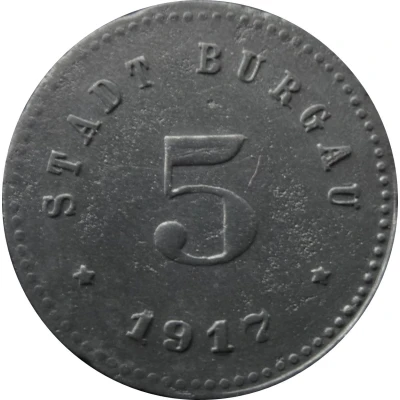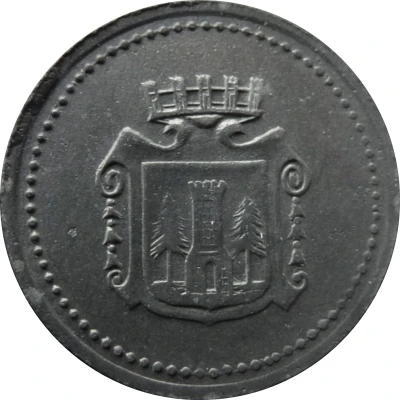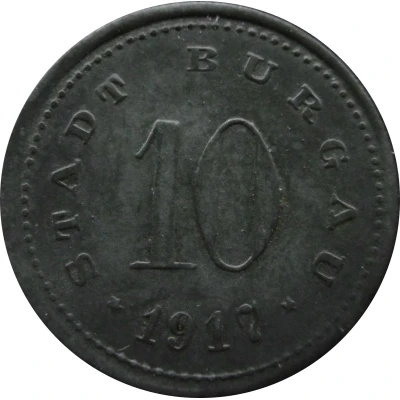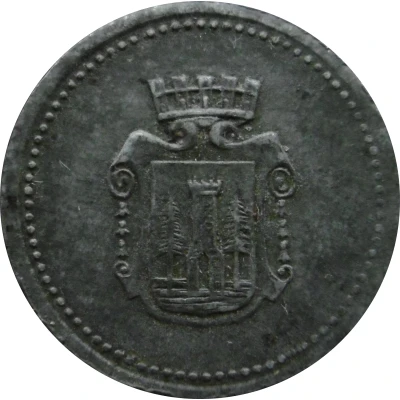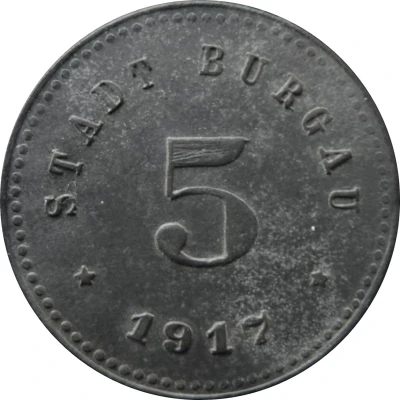
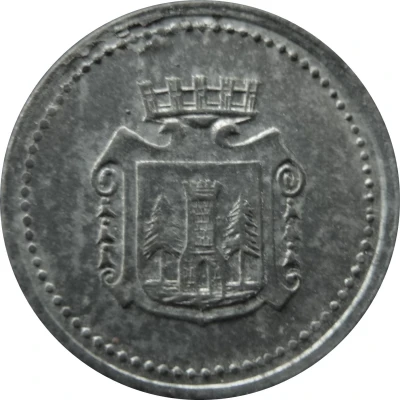

© Willem63 (CC BY-NC-SA)
5 Pfennigs - Burgau
1917 year| Zinc | 2.1 g | 19.5 mm |
| Issuer | City of Burgau (Federal state of Bavaria) |
|---|---|
| Emperor | William II (Wilhelm II) (1888-1918) |
| Type | Standard circulation coin |
| Year | 1917 |
| Value | 5 Pfennigs (5 Pfennige) (0.05) |
| Currency | Mark (1914-1924) |
| Composition | Zinc |
| Weight | 2.1 g |
| Diameter | 19.5 mm |
| Thickness | 1.2 mm |
| Shape | Round |
| Technique | Milled |
| Orientation | Medal alignment ↑↑ |
| Demonetized | Yes |
| Updated | 2024-10-04 |
| Numista | N#313321 |
|---|---|
| Rarity index | 97% |
Reverse
Pearl rim, with coat of arms centered
Edge
Plain
Interesting fact
The 5 Pfennigs - Burgau 1917 coin from the City of Burgau in the Federal state of Bavaria, made of Zinc and weighing 2.1 grams, is interesting because it was issued during a time of economic and political turmoil in Germany. The coin was minted in 1917, during World War I, when the country was experiencing severe economic difficulties, including inflation and a shortage of metals. As a result, the German government was forced to use alternative metals, such as zinc, to produce coins. This coin is a unique example of how a country's currency can be impacted by historical events, and it serves as a reminder of the economic challenges faced by Germany during World War I.
